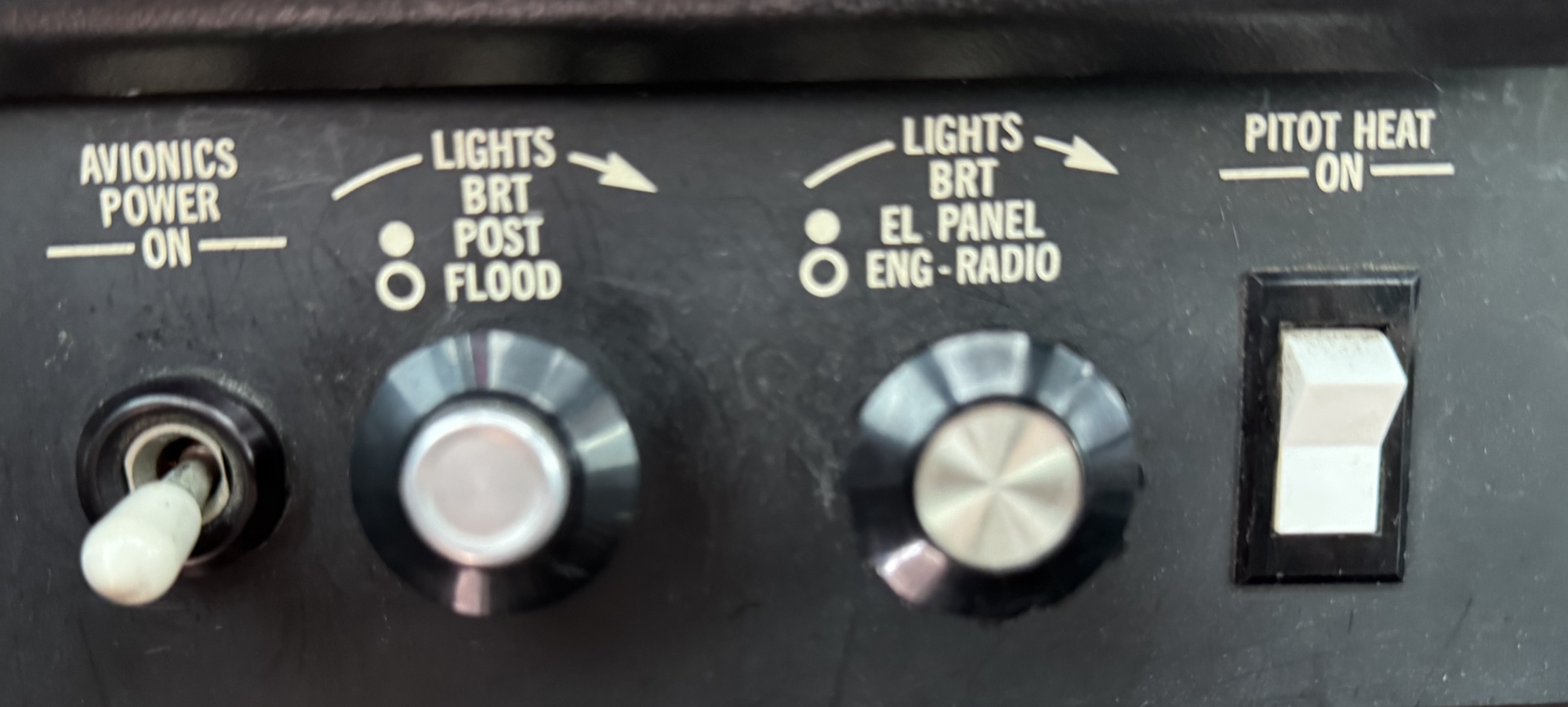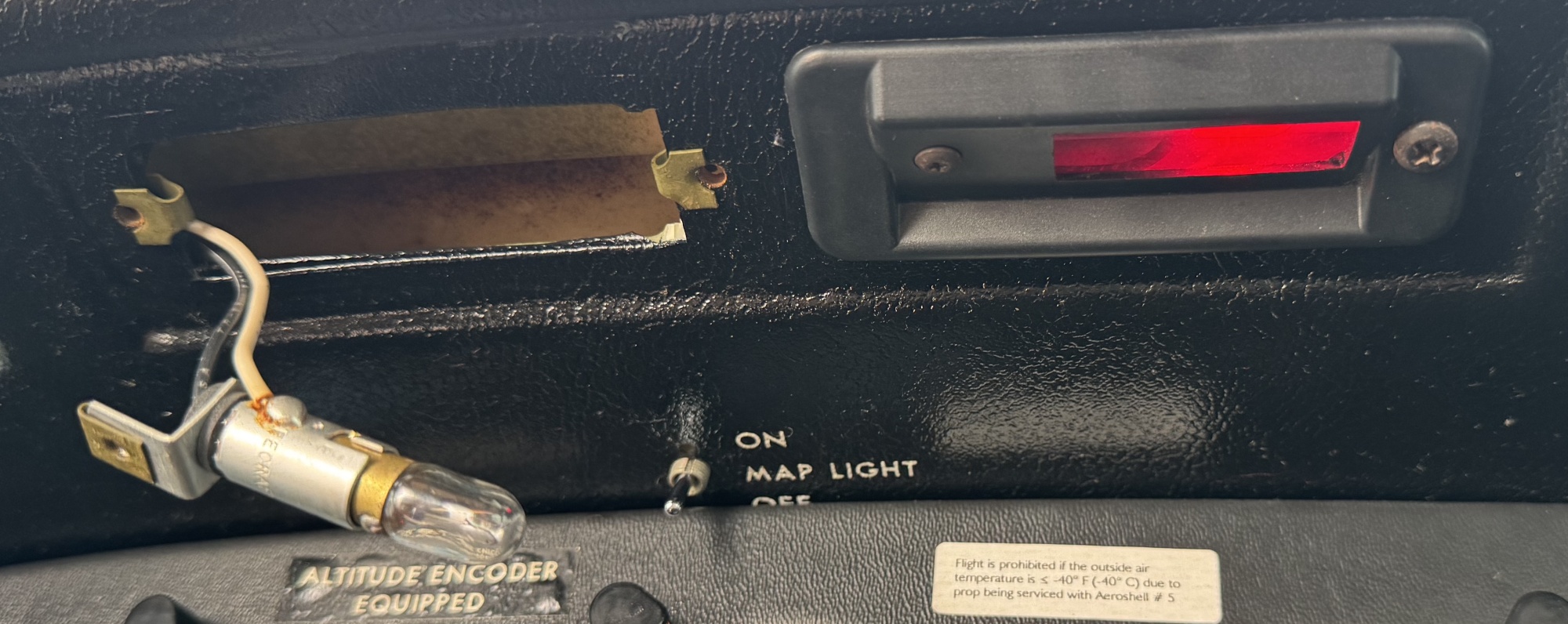how are these darn lights *supposed* to work?
Recently purchased 1981 C182R.
I have been trying to figure out the interior lights. I think something is wrong, but I am not sure how they are supposed to work -- so any guidance would be appreciated.
I have what I think is a common light control as shown below. It has the dual knob rheostat on the left and a single knob rheostat on the right:
The right knob EL PANEL / ENG-RADIO works as intended I think: Turning the knob to the right brightens both the the engine/fuel lights, and, where appropriate, the radio electroluminecent lights. All the way to the left, leaves the radio lights bright enough to see in the daytime with the post lights off. (Note, I think you need the NAV lights on for this to work.)
The left knob "POST / FLOOD" I think is not working as intended. I cannot seem to move the interior silver knob separately from the outside black plastic knob. The post lights brighten as you would expect when turning right. But the FLOOD lights do not seem to change. Are the FLOOD lights the glareshield flood lights AND the overhead red/white flood lights? The glareshield flood lights seem to be on all the time. Which possibly explains why in the logbook these bulbs were changed so much. Are the glareshield flood lights supposed to be on all the time? And the dual rheostat knob is supposed to be individually adjustable, right? Any suggestions how how to free the two up? Note, I could find no mention in the logbooks of this rheostat ever being worked on.
There is also what I think is the "Map Light" underneath the glareshield. Shown here with the cover removed and a known good bulb installed
I think the switch under the glareshield is meant to operate this light separate from the glareshield floods, correct? It currently does not seem to work. Note that the map light mounted to the yoke works correctly.
I am scheduled for a full panel redo, but not sure yet what to do about lighting and whether or not I will keep the glareshield flood lights. Are any of these legacy lights useful anymore with all modern avionics installed?
Thanks in advance for your help.



Comments
Hi Tim,
Perhaps one of our members who has a 182R will chime in, but in the meantime, here is a link to the 1981 Cessna 182R. Beginning on page 7-29, you will see a detailed description of how Cessna intended the interior lighting to operate. Any deviation, such as your concentric dimmer knobs not being able to turn separately, should be investigated by your A&P/IA.
I hope this is useful:
Perhaps it agrees with the POH in the aircraft?
Regards,
Mike
The two knobs are indeed supposed to operate separately. There is an Allen screw (which takes a .050 Allen wrench) that is mounted in the inner knob. It is accessed THROUGH the outer knob through a hole in the outer knob. The outer knob hole has to be lined up with the Allen screw in the inner knob. Once the Allen screw is loosened a little bit then both knobs can be pulled of the rheostat assembly. If the knobs are stuck together it is likely that the Allen screw is too long and is protruding into the access hole of the outer knob preventing it from turning separately.
My advice is to take it to an avionics shop. Most A&P mechanics are not good at troubleshooting electrical work. This kind of work is exactly what avionics shops are used to working on. They understand how the system is supposed to work and can make it correct. It sounds like you might need a new rheostat, and the wiring, while not difficult, is not intuitive unless you understand that the rheostat controls a transistor that then controls the lighting. This is so that the rheostat doesn’t have to bear the brunt of the heat generated when the lights are dimmed
Best,
David
Thanks for the detailed response! Very helpful.
My plane is now in for a full avionics upgrade, so I am getting new PWM rheostats anyway. These will only need to control the glareshield and overhead lighting, so much simpler setup, and it should work!